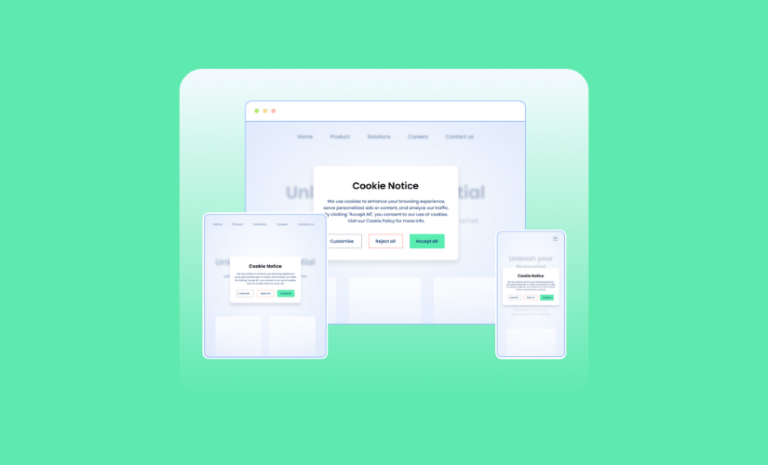Did you know you can reach millions if not billions, of potential customers with minimum effort and sometimes even for free?
Not a clickbait, but it’s actually true. What you need is product feed marketing.
In today’s competitive online marketplace, it’s more important than ever to get your products in front of as many potential customers as possible. One mighty effective yet unknown to a lot, way to do this is by using product feed marketing for your WooCommerce store.
With product data feed marketing, you can promote your products on multiple channels across the web and boost your traffic and sales.
In this article, we will discuss what a product feed is and how to create and optimize a WooCommerce product feed.
Let’s dive in.
What is a Product Feed?
A product feed is like a digital shopping list that you can use to share information about your products with different platforms, like search engines or comparison websites. It includes details such as product names, descriptions, prices, images, and links.
This helps these platforms show accurate and up-to-date info to potential customers who are looking for products online. It’s like giving these platforms the right ingredients to create a yummy recipe for your products to reach the right people!
A WooCommerce product listing feed is a file that contains your WooCommerce product data. It typically includes all your product details, such as the title, price, description, image and product URL, stock unit, product IDs, etc.
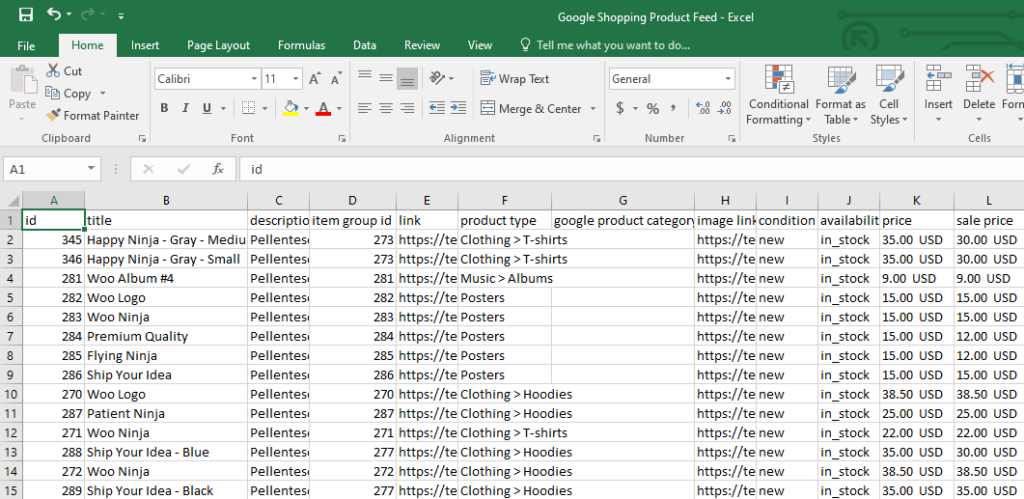
You can use your WooCommerce product feed to list and promote your products to multiple channels besides your Woo store and reach a wide range of audience. For example, you can upload your product feed to giant marketplaces like Amazon, Target, Walmart, and eBay.
Besides marketplaces, you can list your products on price comparison shopping engines such as Google Shopping, Bing Smart Shopping, PriceGrabber, etc. Social media platforms such as Facebook, Instagram, and Snapchat also recommend you upload a product feed to display products and run promotional campaigns on those platforms.
In addition to those, you also will need product feeds to create product shopping ads on various channels. Products feed generally comes in formats such as CSV, XML, TXT, JSON, etc., among which CSV is the most popular.
In simple words, product feed WooCommerce is a product catalog file that you can upload to multiple channels to promote your products and grab the attention of the customers of those channels. As a result, it will increase your visibility and conversions.
What are the Attributes of a WooCommerce Product Feed?
Attributes in a product feed are like pieces of information or details about a product that help describe and identify it. They provide essential information for online platforms to understand and display the products correctly.
The specific attributes that are required or recommended for a product feed will vary depending on the channel that the feed is being submitted. For example, Google Merchant Center requires a certain set of attributes for products to be eligible for Google Shopping.
The purpose of attributes in a product feed is to provide as much information as possible about a product so that potential customers can easily find and understand it. The more complete and accurate the attributes, the more likely a product is to be seen by potential customers.
Let’s discuss some of the most common or necessary attributes. We will also share some WooCommerce product feed optimization tips along with them.
Title
The name or title of the product. The product’s title is the most important attribute, as it is the first thing that potential customers will see. The title should be clear and concise and accurately reflect the product’s features and benefits.
Description
The product description is a more detailed explanation of the product. It should include information about the product’s features, benefits, and how it can be used.
Price
The cost of the product. The product price is another essential attribute. It should be accurate and up-to-date.
Image URL
The web address of the image shows what the product looks like. Images are a great way to help potential customers visualize a product. They should be high-quality and representative of the product.
SKU (Stock Keeping Unit)
A unique code or number that helps track inventory.
Brand
The name of the company that made the product. This can be helpful for customers who are loyal to a particular brand.
Category
The group or type the product belongs to (like “Electronics” or “Clothing”). The product category attribute helps to categorize the product so that it can be found by potential customers who are searching for products in that category.
You need to map your categories correctly in the feed for different channels so that they list your entries in the right places.
Availability
The product availability attribute indicates whether the product is in stock, out of stock, or on pre-order. This is important for customers who want to know if they can buy the product right away.
URL
The link to your product page. Every channel requires this attribute. Along with other details, you must provide the URL of the product page in the WooCommerce product feed. This will allow the channels to redirect the customers to your product page when they click on the listings.
Color
The color of the product, if applicable. Color is an important attribute for products that come in different colors.
For example, a clothing retailer might include the color attribute for all of their products. This would allow customers to filter their search results by color, making it easier to find the products that they are looking for.
Size
Size is another important attribute for products that come in different sizes. For example, a shoe retailer might include the size attribute for all of their shoes. This would allow customers to filter their search results by size, making it easier to find the shoes that fit them.
Weight
The weight of the product. Weight is an important attribute for products that have a significant weight.
For instance, a furniture retailer might include the weight attribute for all of their furniture. This would allow customers to filter their search results by weight, making it easier to find furniture that they can easily transport.
Attributes can be used in a variety of ways to improve the visibility and performance of a product feed. Attributes can be used to create product filters, which allow customers to narrow down their search results.
The attributes can also be used to target product ads, which means that the ads are only shown to customers who are interested in the products that are being advertised.
If you are an online retailer, then it is important to understand the importance of attributes in a product feed. By carefully selecting and formatting the attributes in your product feed, you can improve the visibility and performance of your products, which can increase product sales with WooCommerce.
How to Create WooCommerce Product Feed
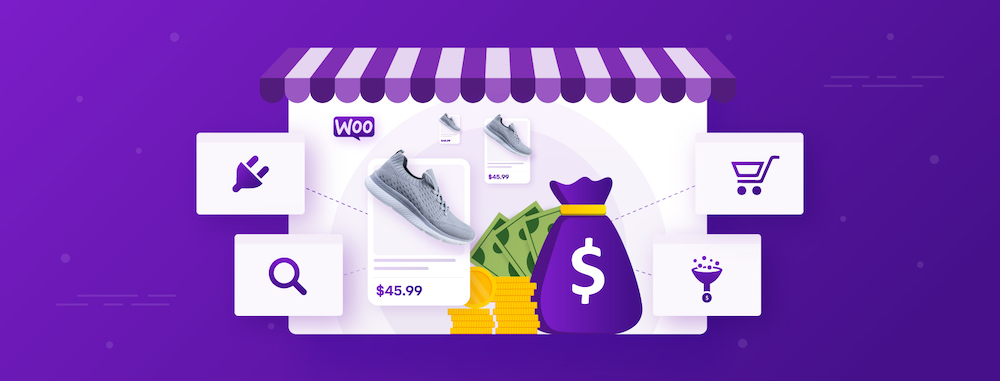
Creating a WooCommerce product feed is fairly simple. As we have mentioned, not all channels have the same guidelines and attribute requirements. Therefore, first, you need to learn the necessary attributes for a channel.
After that, you can create a CSV spreadsheet file using Google Sheets or Microsoft Excel and insert the attributes as column headers. And finally, copy-paste your WooCommerce product data underneath the attributes.
However, this is the manual method of creating a feed. This could be useful if you only have a few products and want to promote them in one or two extra channels.
Nonetheless, from a practical standpoint, WooCommerce stores generally have several product categories and a good number of products. And everyone wants to promote their products on as many channels as possible to maximize exposure. Under these circumstances, manually creating a WooCommerce product feed can be very time-consuming and error-prone.
Let’s discuss the challenges you may face if you want to create and maintain your product feeds manually.
Disadvantages of Creating a WooCommerce Product Feed Manually
Here are some challenges or difficulties you may face if you want to manually create a product catalog feed for WooCommerce.
Time-consuming
Manually creating a product feed can take hours or even days, depending on the number of products you have. If you have a large number of products, this can be a very time-consuming and tedious task.
For example, if you have 100 products, it could take you several hours to manually create a product feed. If you have 1000 products, it could take you several days.
Error-prone
Incorrect data or poorly formatted attributes are the most typical causes of feed failures/rejection by channels. 7-10% of eCommerce product feed contains errors and either displays wrong information or gets rejected by the platforms.
It is easy to make mistakes when manually copying and pasting data, which can lead to errors in your product feed. These errors can prevent your products from being displayed correctly on other channels, which can lead to lost sales.
For example, if you accidentally misspell a product name or price, your product may not be displayed correctly on other channels. This could lead to customers not being able to find your product or being shown the wrong price.
Difficult to Maintain
Every time you add new products or make changes to existing products, you will need to update your product feed manually. This can be a time-consuming and error-prone task.
If you have a large WooCommerce store, you will need to make random changes due to different marketing strategies. For example, you will need to add/remove products based on season or availability. You will also run seasonal, occasional discount, and sale campaigns.
You need to make sure to exclude the out-of-stock products from the feed. Also, you need to update your prices in the feed at the start and end of any discount campaigns. If you don’t update your WooCommerce product feed on time, customers from other channels will be misled, and you will lose their trust.
Not Scalable
Manually creating a product feed is not scalable for businesses with a large number of products. If you have a large number of products, it will be difficult to keep your product feed up-to-date manually.
Not Compliant
If you are using your product feed for advertising or other purposes, you may need to ensure that it complies with certain standards. This can be difficult to do manually.
Let’s say you are using your product feed for Google Shopping, you will need to ensure that your product feed complies with the Google Shopping Product Feed Specifications. This can be a complex and time-consuming task.
The best option for you is to use a WooCommerce product feed plugin. There are several product feed plugins available, but the one we found most efficient is the CTX Feed.
CTX Feed is a WooCommerce product feed generator plugin that allows you to create product feeds for a variety of marketing and affiliate channels. It features over 130 ready-made templates, so you can create a product feed in just a few clicks. You can also customize the WooCommerce product feed to meet the specific requirements of each channel.
This plugin can save you from all the challenges/troubles we mentioned above. The plugin automatically collects your product data and generates the feed. It also comes with automatic update features.
The best option we found is the URL/FTP/SFTP/HTTP connection feature. If the channel supports it, you no longer need to download and upload the feed files manually. You can host the feed file from your WordPress site and connect it to the channel through the feed URL.
How to Set up a WooCommerce Product Feed Using a Plugin
Let’s say you want to list your WooCommerce products on Google Shopping. Google Shopping is a price comparison shopping engine where retailers like you can list and promote your products for absolutely free.
Google Shopping receives more than a billion visitors per month. That makes this channel incredibly lucrative for store owners like you because potential customers can find and land on your product page. You can also run paid advertisements on this platform which are known as Google Shopping ads.
To list your products on Google and display your listings and ads across different Google networks, including Google Shopping, you need to upload your feed to the Google Merchant Center.
Coming back to creating the feed, install the free version of CTX Feed to get things started.
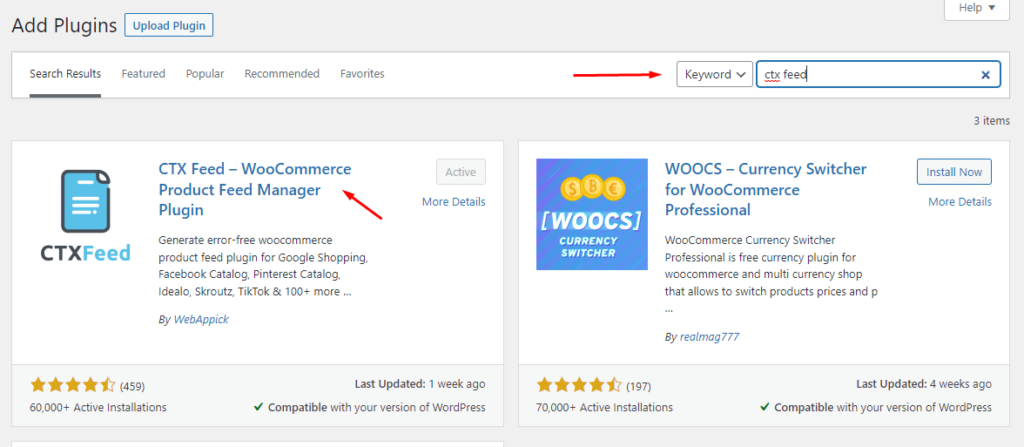
To add WooCommerce product feed, click on CTX Feed>>Make Feed.
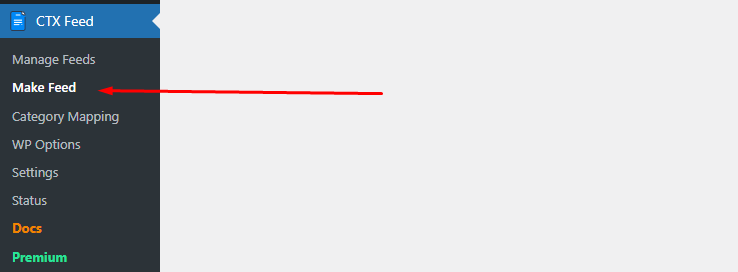
From the Templates, select your template.
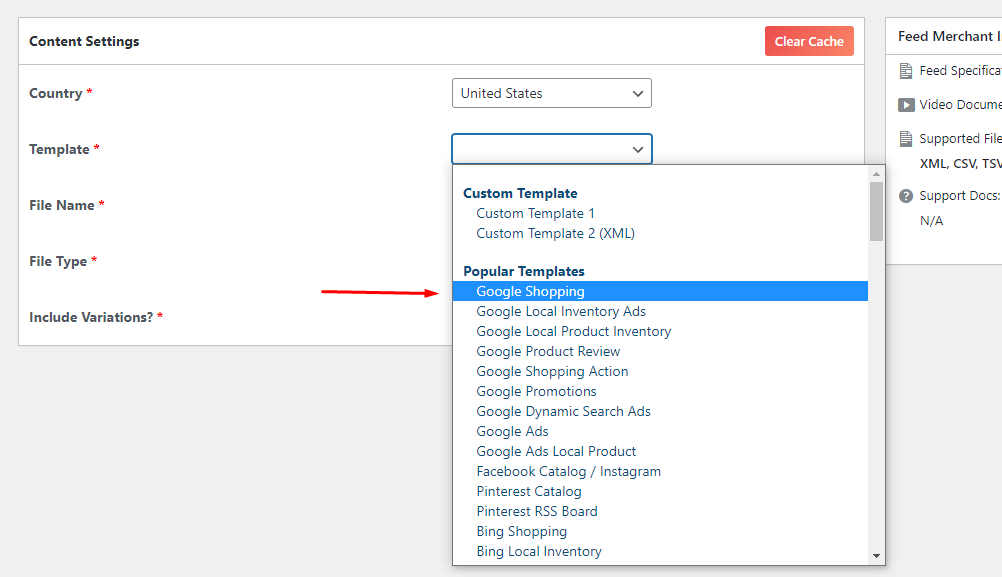
Select a file type.
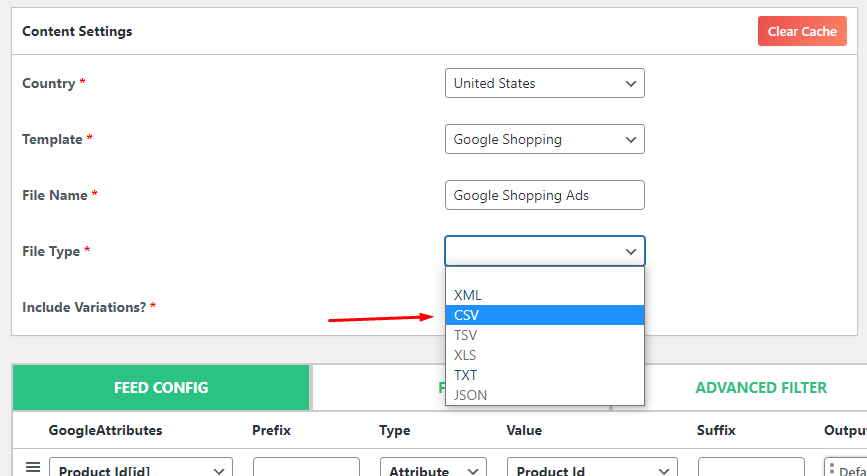
The plugin will automatically populate the necessary product characteristics we know as attributes.
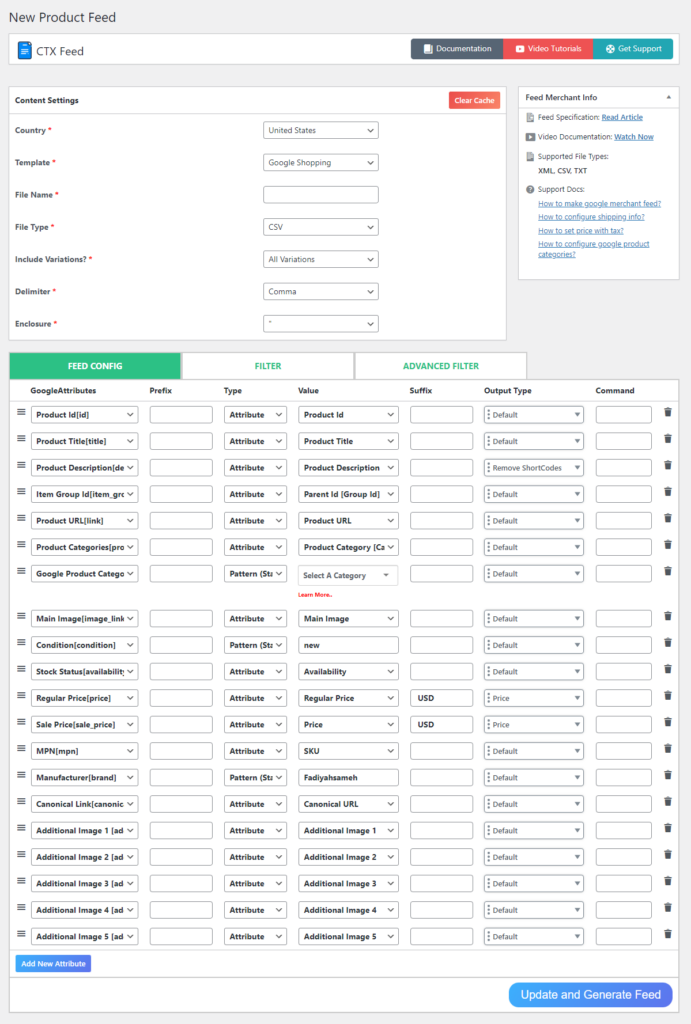
Now when you click the update and generate button, CTX Feed will collect your Woo product information and generate the feed for you.
How to Upload the WooCommerce Product Feed to a Channel
You can find all your WooCommerce product feed files on the Manage Feeds page.
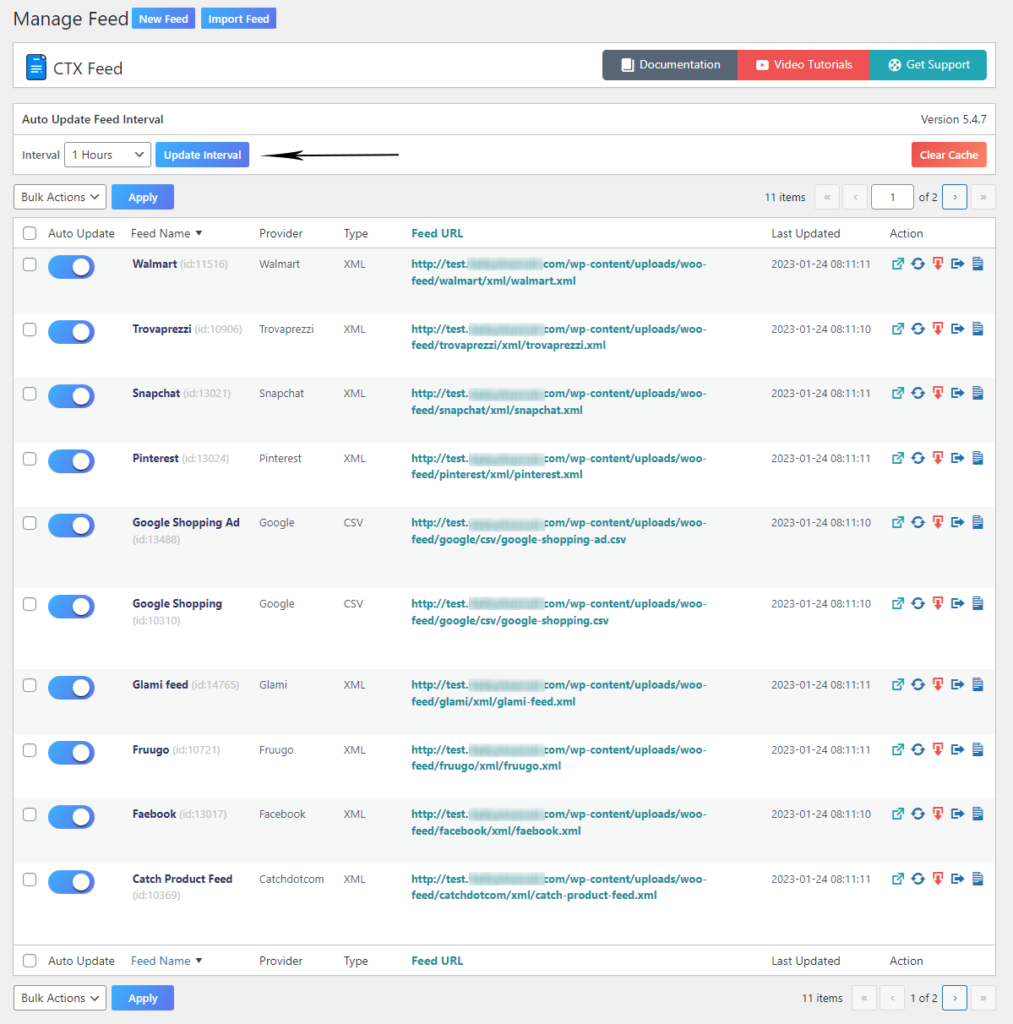
You can also enable and set automatic update features from this page. Set interval means the time after which the plugin will search, find, and update all your changes to the feed files.
You can download, edit, duplicate, view, regenerate, or copy feed URLs from the feed settings.
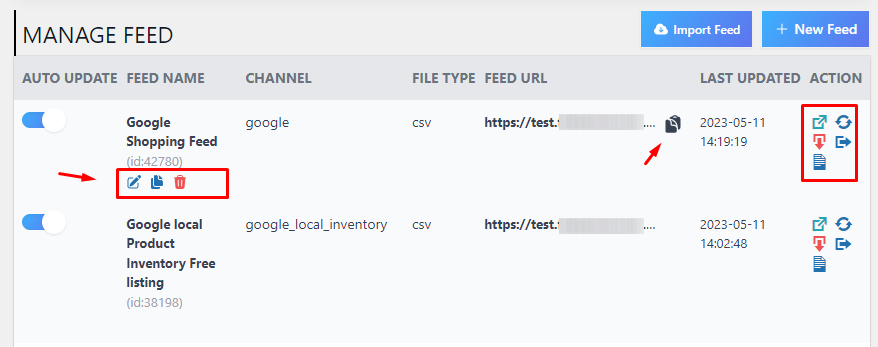
Copy the product feed URL In Google Merchant Center, there’s an upload option called Scheduled Fetch.
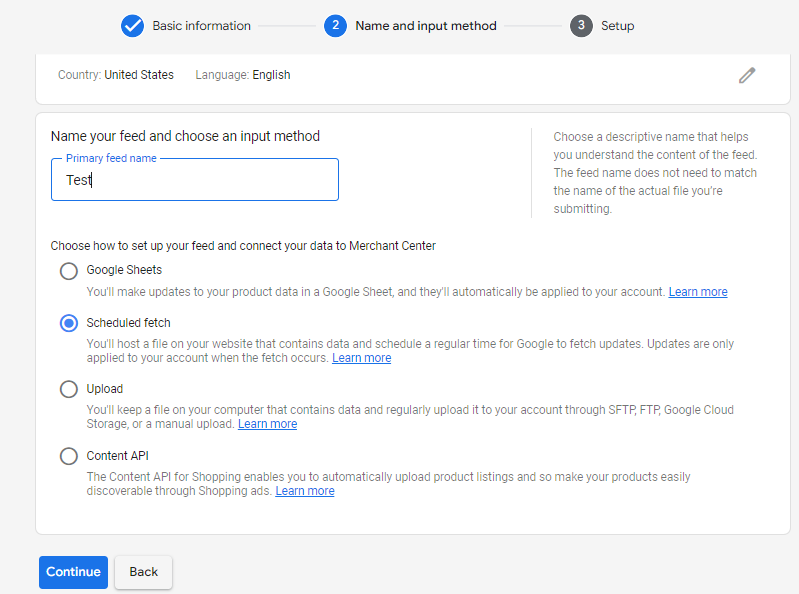
Using this option, you can connect your WooCommerce product feed to Google. Paste the product feed URL you copied from the plugin. Google Merchant Center will upload and display your products on Google Shopping collecting data from your linked feed.
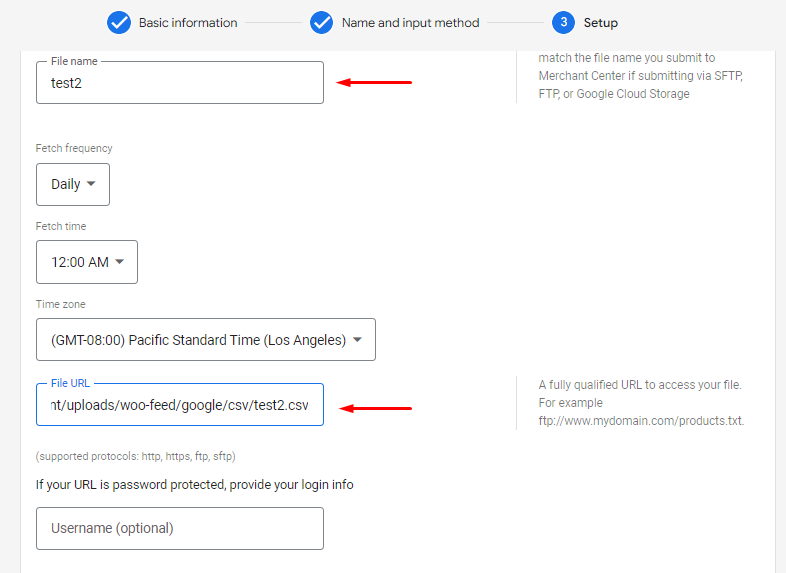
You can also set the fetch frequency for your feed from this window. When you make any changes at your store, CTX Feed will automatically collect the changes after your set interval.
And Google Merchant Center will grab/fetch those changes at your set frequency. These two tools practically automate the whole process. As a result, you will never have to update your listing on Google Shopping manually.
Benefits of WooCommerce Product Feed
Using a product feed for your WooCommerce store can offer several significant benefits that can enhance your eCommerce operations and help drive more sales.
Here are some benefits of using a product feed for your WooCommerce store:
Increased Visibility
Product feeds allow you to list your products on various online marketplaces and shopping engines, which can increase visibility and reach a larger audience. This can lead to increased sales and revenue.
As we have mentioned, if you use a WooCommerce product feed to list your products on Google Shopping, your products will be displayed on the Google Shopping results pages. Not just on the Shopping engine but also across Google visual networks. This can help you reach more potential customers and increase sales.
Improved Product Data
Product feeds can help ensure that product data, such as descriptions and pricing, is accurate and up-to-date across multiple platforms. This can help improve the customer experience and reduce the risk of errors or discrepancies.
For instance, when you list your products on Amazon using a product feed, you can be sure that the product data on Amazon is the same as the product data on your WooCommerce store. This can help ensure that customers have a consistent and accurate experience when shopping for your products.
Multi-channel Marketing
With a product feed, you can easily promote your products across different channels, such as Google Shopping, Amazon, Facebook, Instagram, and more. This allows you to tap into different audiences and target customers on their preferred platforms.
Better Inventory Management
By using product feeds to update your own website and other platforms, businesses can more easily manage their inventory. This can help ensure that you always have the correct amount of stock available and that customers do not experience out-of-stock errors.
Better SEO
Product feeds can help improve your website’s SEO by providing search engines with more information about your products. This can help your website rank higher in search results, which can lead to more traffic and sales.
For example, when you list your products on Google Shopping using a Woo feed, Google will index your product feed and use the information in the feed to rank your products in search results. This can help your products appear higher in search results for relevant queries, which can lead to more traffic and sales.
In case you are looking for a WordPress plugin to boost your eCommerce site SEO, read our detailed Rank Math review to know if Rank Math is the right SEO plugin for your product site.
Cost-effective
Product feeds can be a cost-effective way to reach a wider audience and increase sales. Many price comparison engines, such as Google Shopping, let you display your products for free. Google Shopping organic listing is always free.
And for other channels and comparison engines, you only pay when someone clicks on your entry. The same goes for shopping product ads. This can be a more cost-effective way to advertise your products than traditional advertising methods, such as pay-per-click (PPC) advertising.
Tracking and Analytics
Product feeds can help you track and analyze the performance of your products across different channels. This information can help you identify which channels are driving the most sales and traffic and make adjustments to your marketing strategy accordingly.
Time and Effort Saving
Product feeds can save you time by automating the process of listing your products on different channels. This can free up your time to focus on other aspects of your business, such as product development and customer service.
Real-time Updates
Product feeds can be set up to update automatically whenever you make changes to your product information, such as price adjustments, stock availability, or product descriptions. This ensures that potential customers always have access to accurate and current information.
Increased Sales Opportunities
By showcasing your products on multiple platforms, you increase the chances of reaching customers who might not have discovered your WooCommerce store otherwise. This can lead to more sales and revenue.
Consistent Branding
A WooCommerce product feed allows you to maintain a consistent brand image across different platforms. This includes using uniform product images, descriptions, and other branding elements.
Dynamic Remarketing
Product feeds can be used for dynamic remarketing campaigns. In dynamic remarketing, you can show personalized ads to users who have previously interacted with your products but haven’t made a purchase yet. This can help re-engage potential customers and encourage them to complete their purchases.
Bulk Updates
If you have a large inventory, making updates to all your product listings manually can be challenging. With a WooCommerce product feed, you can make bulk updates efficiently, saving time and reducing the risk of errors.
Competitive Advantage
Utilizing product feeds effectively can give you an edge over competitors who might not be leveraging such technologies. Different channels provide extensive analytics data about your product feed listings. They also provide some insights into your competitors.
You can analyze your competitor’s pricing and marketing strategies and come up with a better pricing plan for your WooCommerce products. This, in turn, will create a higher chance of traffic and conversions.
Wrap Up
In summary, using a WooCommerce product feed for your store can streamline your marketing efforts, increase your product’s exposure, and drive more sales. It’s an essential tool in the modern eCommerce landscape that can help you reach a broader audience and boost your online business.
Hope this article will guide you to create product feeds the right way. Let us know if you have any suggestions or questions.

